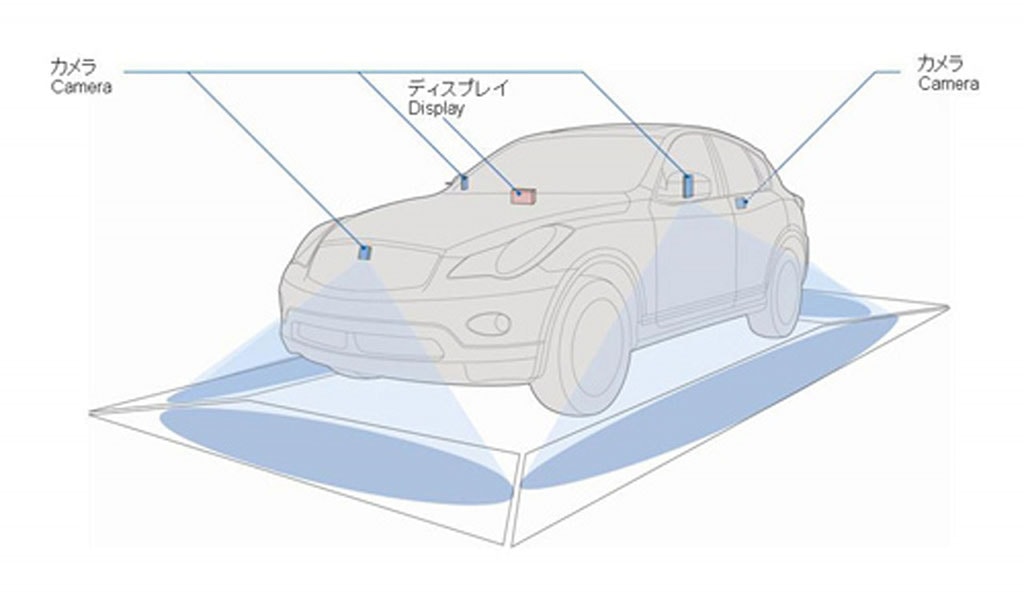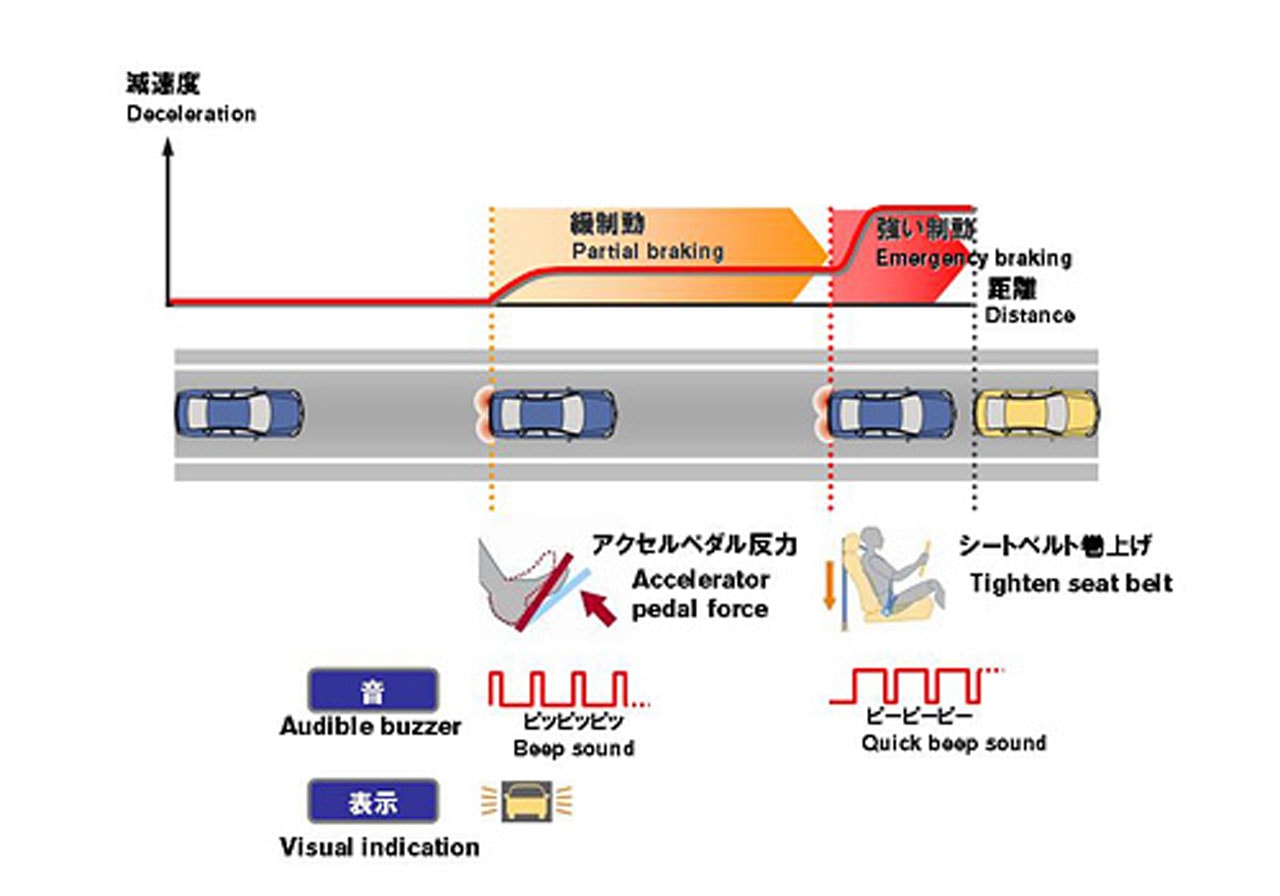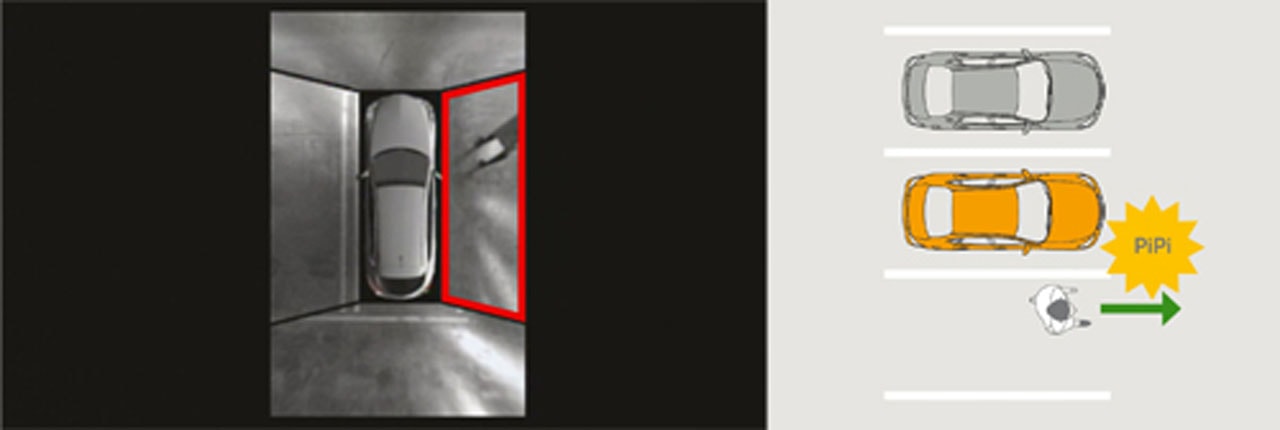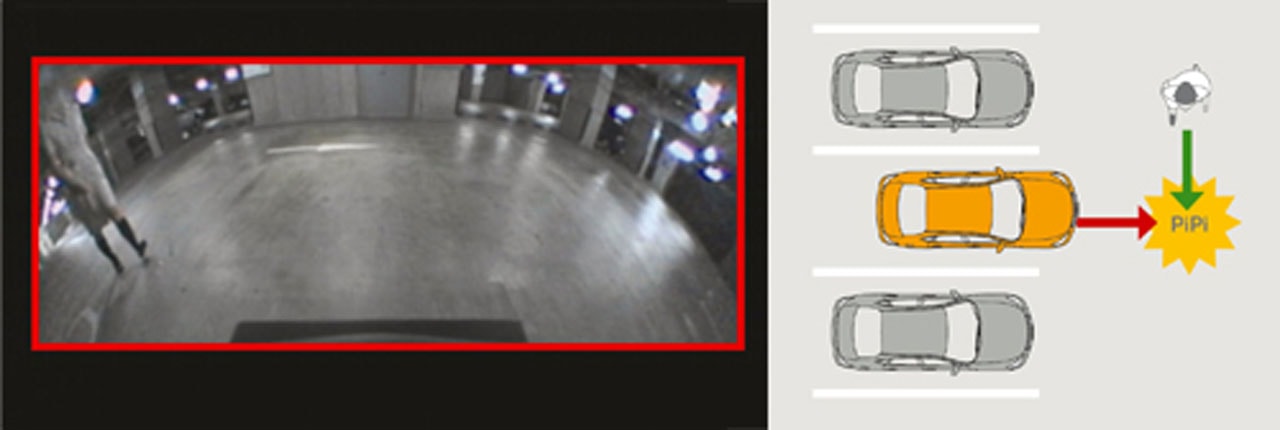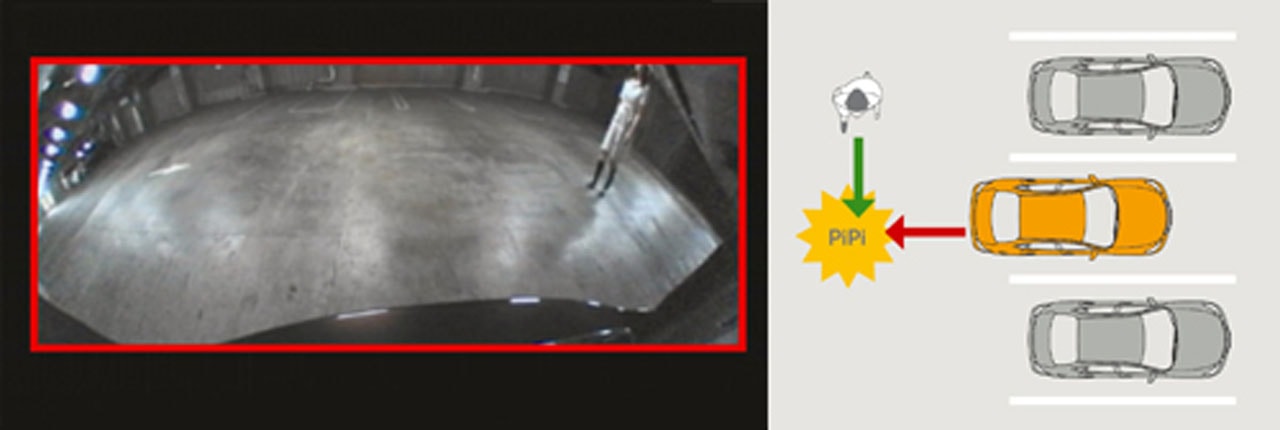The last few years have seen automobiles being fitted with intelligent systems that scan the area surrounding a vehicle, warn the diver about potential hazards and even perform actions that are aimed at avoiding an imminent impact.
The trend is a positive one, as these systems act as some sort of a safety co-driver. However, there is no need to worry about the interference, as the engineers have designed them in such a way that they always allow the driver to take the final decision.
The latest automotive producer to join this awareness party is Nissan, which has presented two new safety technologies that will be introduced on its future vehicles.
The first one uses the “Forward Collision Avoidance Assist Concept” and is aimed at preventing both sides of potential rear end accidents: assisting the driver in order to avoid an impact with the vehicle ahead and reducing the risk of sudden braking that could cause the car to be hit by a vehicle approaching from behind. Nissan claims that the system helps the driver avoid potential collisions up to a speed of approximately 37 mph (60 km/h), the highest level registered by a forward collision avoidance system so far.
The concept relies on a highly sensitive radar sensor that monitors the distance from the vehicle ahead and its relative speed. When the system decides that the car is approaching the vehicle in front of it too fast, it alerts the driver using both visual and acoustic signals. Subsequently, the accelerator pedal is gently pushed up and the brakes are smoothly applied. This gradual deceleration mode is used with the aim to reduce the risk of the vehicle being rear-ended by a car approaching from behind.
If a collision becomes imminent, the brakes are automatically applied with a higher intensity and the driver’s seatbelt is tightened. The moves are being performed in order to assist the driver in avoiding an accident with the vehicle in front of the car.
The second system is the Moving Object Detection (MOD), which has been created to detect moving objects around the vehicle and make sure that the driver is aware of their presence. The new feature has been developed as an additional function for Around View Monitor, Nissan’s existing driving and parking assistance system.
Around View Monitor offers a bird’s eye image of the vehicle and its surroundings. The system relies on four ultra-wide angle high-resolution cameras found at the front, sides and rear of the vehicle. These are processed in order to offer the driver a comprehensive view. The system was first introduced on one of the company’s vehicles in October 2007.
Around View Monitor features a screen display that helps the driver steer the vehicle into a parking space. MOD uses both the screen display and an audio buzzer to alert the driver of moving objects in the proximity of the car. The system is only active during parking maneuvers, when the vehicle starts or when the driving speed is low. It only warns the driver and doesn’t come with an automatic braking function, as it is aimed at offering the driver a better view in situations such as when exiting a parking space or entering an intersection that offers poor right-and-left side visibility.
The MOD function enhances the role of the Around View Monitor system, using the latter’s sensors. As we said, the system doesn’t automatically apply the brakes if a collision becomes imminent - this function can be found on other systems currently on the market.
When the system is in the “Park” mode is warns the driver about objects that are close to the car, such as pedestrians, using audio and visual signals. As for the Moving Forward/Reversing mode, this notifies the driver using the same signals when an object is detected in the front view or the rear view.
The company’s engineers have worked to make the aforementioned systems as intuitive as possible, in order to provide a good communication with the driver. Nissan has also created a marketing wrapping for its safety technologies, introducing them as part of the “Safety Shield” concept that uses the “vehicles help to protect people” tagline. These technologies will make their way into production Nissan and Infinity models in the near-term future.
The trend is a positive one, as these systems act as some sort of a safety co-driver. However, there is no need to worry about the interference, as the engineers have designed them in such a way that they always allow the driver to take the final decision.
The latest automotive producer to join this awareness party is Nissan, which has presented two new safety technologies that will be introduced on its future vehicles.
The first one uses the “Forward Collision Avoidance Assist Concept” and is aimed at preventing both sides of potential rear end accidents: assisting the driver in order to avoid an impact with the vehicle ahead and reducing the risk of sudden braking that could cause the car to be hit by a vehicle approaching from behind. Nissan claims that the system helps the driver avoid potential collisions up to a speed of approximately 37 mph (60 km/h), the highest level registered by a forward collision avoidance system so far.
The concept relies on a highly sensitive radar sensor that monitors the distance from the vehicle ahead and its relative speed. When the system decides that the car is approaching the vehicle in front of it too fast, it alerts the driver using both visual and acoustic signals. Subsequently, the accelerator pedal is gently pushed up and the brakes are smoothly applied. This gradual deceleration mode is used with the aim to reduce the risk of the vehicle being rear-ended by a car approaching from behind.
If a collision becomes imminent, the brakes are automatically applied with a higher intensity and the driver’s seatbelt is tightened. The moves are being performed in order to assist the driver in avoiding an accident with the vehicle in front of the car.
The second system is the Moving Object Detection (MOD), which has been created to detect moving objects around the vehicle and make sure that the driver is aware of their presence. The new feature has been developed as an additional function for Around View Monitor, Nissan’s existing driving and parking assistance system.
Around View Monitor offers a bird’s eye image of the vehicle and its surroundings. The system relies on four ultra-wide angle high-resolution cameras found at the front, sides and rear of the vehicle. These are processed in order to offer the driver a comprehensive view. The system was first introduced on one of the company’s vehicles in October 2007.
Around View Monitor features a screen display that helps the driver steer the vehicle into a parking space. MOD uses both the screen display and an audio buzzer to alert the driver of moving objects in the proximity of the car. The system is only active during parking maneuvers, when the vehicle starts or when the driving speed is low. It only warns the driver and doesn’t come with an automatic braking function, as it is aimed at offering the driver a better view in situations such as when exiting a parking space or entering an intersection that offers poor right-and-left side visibility.
The MOD function enhances the role of the Around View Monitor system, using the latter’s sensors. As we said, the system doesn’t automatically apply the brakes if a collision becomes imminent - this function can be found on other systems currently on the market.
When the system is in the “Park” mode is warns the driver about objects that are close to the car, such as pedestrians, using audio and visual signals. As for the Moving Forward/Reversing mode, this notifies the driver using the same signals when an object is detected in the front view or the rear view.
The company’s engineers have worked to make the aforementioned systems as intuitive as possible, in order to provide a good communication with the driver. Nissan has also created a marketing wrapping for its safety technologies, introducing them as part of the “Safety Shield” concept that uses the “vehicles help to protect people” tagline. These technologies will make their way into production Nissan and Infinity models in the near-term future.
